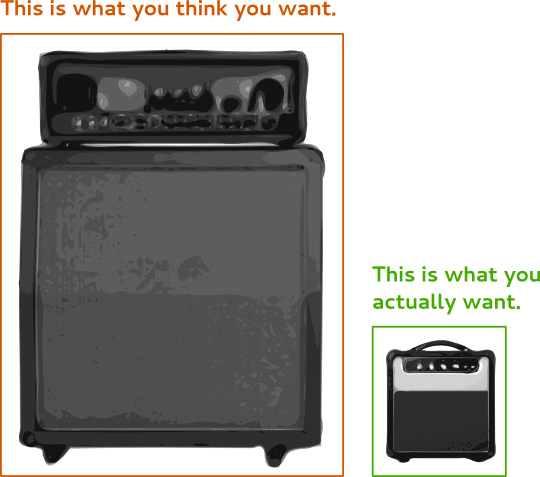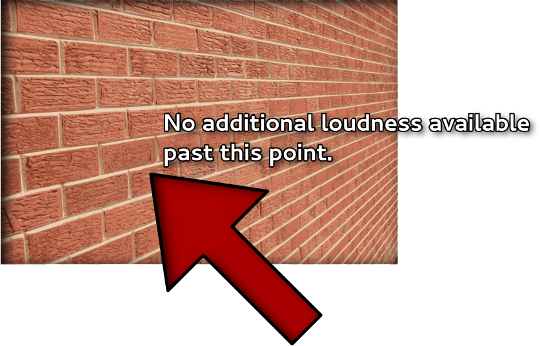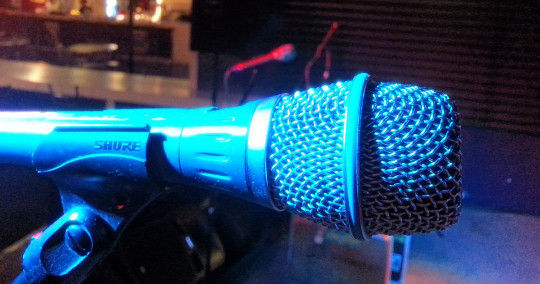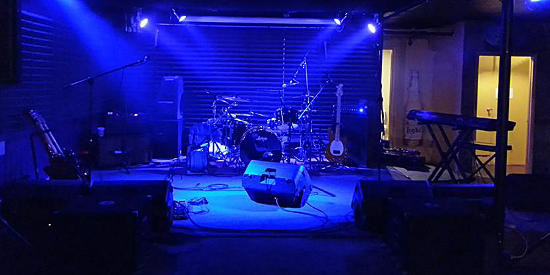The minimum requirement isn’t being able to stay on pitch, nor is it having a nice voice.
Please Remember:
The opinions expressed are mine only. These opinions do not necessarily reflect anybody else’s opinions. I do not own, operate, manage, or represent any band, venue, or company that I talk about, unless explicitly noted.

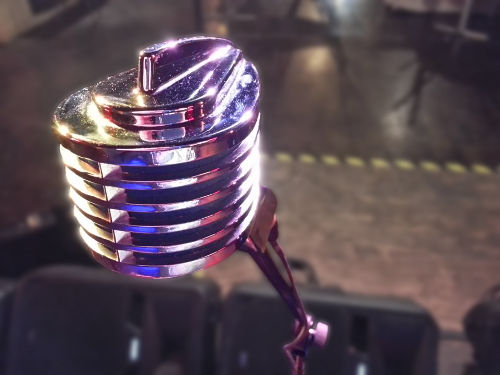
It’s amazing how you can use microphones to shoot yourself in the foot. Metaphorically, I mean.
Each open mic on a stage increases the “loop gain” in monitor world and FOH (Front Of House). More loop gain means more system instability. More mics means more backline bleed cluttering up the mix – even if only in subtle ways. More mics means more volume wars on deck, as everybody struggles to hear themselves over everybody else.
More mics means live shows that don’t sound as good as they could, and yet, bands have this tendency to want vocal mics handed out to individual members like cheap candy.
Mostly, I blame this on recording. Not that recording is inherently bad – it just has unintended consequences, like everything else.
It’s A Different World In There
See, it’s easier than ever to record. You can turn any half-decent computer into a highly functional console and tape machine for about the cost of a basic combo-amp. As a result, folks are able to make acceptable (or even excellent) quality, multichannel, overdubbed recordings much earlier in the band’s life cycle than ever before.
This means that “studio magic,” even when it isn’t recognized as such, can be experienced before a musical ensemble has really gotten their live presentation to gel.
The problem here is that the studio has a much larger amount of “usable positive gain” available, especially when parts are overdubbed. So what happens is that Joe, the bassist/ guitarist/ drummer/ xylophonist/ euphonium player/ whatever, is tapped to sing a vocal harmony – because, you know, “we were listening back to the tracks one day, and he started singing a little, and it was just SICK dude…”
And it probably was pretty cool, because Joe has a pleasant voice, and a good sense of pitch. So, Joe gets handed a pair of headphones, and put in front of a mic. He sings just a bit louder than he can talk, which is fine, because that’s loud enough to mostly drown the quiet background noise in the recording area. He’s 10 – 20 dB less powerful than the lead singer, but hey, all you have to do is twist the gain up on the mic pre, and you’re golden.
No problem.
In the studio.
When overdubbing in the studio, feedback isn’t much of an issue. When overdubbing in the studio, the only thing that can bleed into that vocal track is the whir of a computer fan, or leakage from the headphones.
So, Joe lays down that vocal track, and it makes the song sound huge. Or haunting. Or just cooler than it was an hour ago.
And now, of course, the band TOTALLY has to have Joe sing that part for the live show they booked for Saturday night. Oh boy…
We’re Gonna Need One More Mic. And A Miracle.
The band is now unwittingly charging towards a problem with that live gig. The world of live audio has a lot of similarities to the world of studio audio, particularly in the area of terminology. However, live sound has a TON of inherent compromises that aren’t present when you’re overdubbing a “throw it in” vocal track.
On stage, Joe’s mic is part of a partially-closed loop that involves both the monitor speakers and the FOH speakers. (This is what I mean when I talk about “loop gain.”) As more total gain is applied, the likelihood of feedback goes up. For Joe, this is especially problematic, because he’s 10 – 20 dB quieter than the lead singer. Fixing a 10 dB difference in a live environment can be anywhere from challenging to impractical. Fixing a 20 dB imbalance can be anything from “just doable if everything cooperates” to “im-freaking-possible.”
…and total loop-gain goes way up when everybody wants to hear Joe in the monitors, loudly, “because that harmony just makes it sound so FULL, dude.”
Then, there are the feedback issues to contend with in FOH, plus the whole problem that a massive amount of the backline is coming through Joe’s high-gain vocal channel. All the backline bleed makes the show unnecessarily loud, and washes out the lead vocal, so the total gain on the lead vocal goes up, which makes the show even louder.
Folks, when a vocal mic picks up the snare drum and the output HAMMERS the PA’s limiter, you’ve got a problem.
Joe should not be singing live. Trying to make that vocal harmony happen is making a mess of the show as a whole.
So, how do you figure out who gets a vocal mic?
+20 dB, RMS
That heading, right there, is pretty much the answer. As a rule of thumb, you should consider the minimal qualification for someone to have a vocal mic to be this: Compared to all other sources in the room, the vocalist should be able to produce an average of 20 dB more sound pressure at the mic capsule.
Yes, this can be a tall order. Yes, there are situations where the rule doesn’t fully apply.
But, generally speaking, if you want a trouble-free live vocal, the singer has to be able to create lots of separation between them and everything else. Some of this is raw power, and some of it is being good at using the tools. For instance, if someone just can’t abide the concept of being in contact with the grill of a vocal mic, then they either need to sing with the force of a tornado or be denied a microphone. (Proximity buys you more relative sound pressure at the capsule – for “free.” You’d be amazed at how many people refuse to take the deal, though.)
So, how do you figure out if someone is in the ballpark?
- Set aside some time at your next full-band rehearsal.
- Find yourself an audio device of some kind – hardware, software, whatever – that has clear and unambiguous metering between two points that are 20 dB away from each other. For example, a cheap little mixer may be pretty clear about where -20 dB is, and where 0 dB is, but be unclear about how far above 0 dB the clipping point lies. In that case, you’ll want to use -20 dB and 0 dB as your reference points.
- This audio device doesn’t necessarily have to be disconnected from any stage monitors or other vocal amplification that you use, but you should be able to control the volume of those loudspeakers without having an effect on the meters. If this is not the case, disconnect the loudspeakers.
- Have the band play like they mean it. If you back things down in the rehearsal space, but then “get on the gas” for the show, this isn’t going to work. (There’s probably a whole other article right there, actually.)
- While the band is playing, set the gain on the vocal mic so that the average level is at your -20 dB point. You may have to “eyeball” this a bit if the meter ballistics (response time) are set to read peaks and not average levels.
- Now, have the prospective vocalist do their thing. If possible, have them do some different songs with varying feels.
- If the vocalist is consistently able to drive the meter to an average level that’s 20 dB higher than the “bleed,” then they’re probably a good candidate for singing at an actual show. Again, note that I’m talking about an average level. A momentary peak at +20 dB isn’t going to do the job when there’s an audience in the room and “things get real.”
- If the singer can’t “bring it to the table,” then you have to consider your options. If their vocal parts aren’t really core to the songs, then you should probably just go without their contribution during shows. If the parts are crucial, then the band needs to find a way to lose enough volume to make the 20 dB difference happen.
You may find yourself wanting to bend this rule, and I’ll certainly admit that you can. Bending the rule by 3 dB probably isn’t a huge deal. Being 6 dB off is almost certainly manageable by an experienced tech, although some extra compromises might be involved. Nine decibels or more of “fudge factor” is probably more than you want to try to work around, however.
It’s not that pitch and tone don’t matter, because they do. However, just being able to sing the right note in a cool way isn’t enough to earn an open vocal channel. A vocal that sounds beautiful, but isn’t loud enough, doesn’t create a beautiful experience as a whole. Really great bands are about making the whole experience as amazing as possible, so make sure a vocalist’s volume is there before adding a bunch of mics to your live show.



